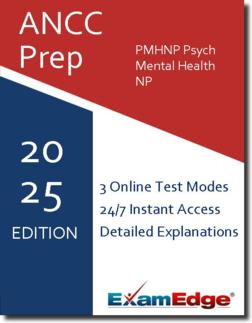ANCC PMHNP Psych-Mental Health NP (PMHNP) Practice Tests & Test Prep by Exam Edge - Blogs
Based on 22 Reviews
- Real Exam Simulation: Timed questions and matching content build comfort for your ANCC PMHNP Psych-Mental Health NP test day.
- Instant, 24/7 Access: Web-based ANCC Psychiatric-Mental Health Nurse Practitioner (Across the Lifespan) practice exams with no software needed.
- Clear Explanations: Step-by-step answers and explanations for your ANCC exam to strengthen understanding.
- Boosted Confidence: Reduces anxiety and improves test-taking skills to ace your ANCC Psychiatric-Mental Health Nurse Practitioner (Across the Lifespan) (PMHNP).

Exam Edge Blogs for ANCC Psychiatric-Mental Health Nurse Practitioner (Across the Lifespan)

How to Become a Mental Health Nurse Practitioner: A Comprehensive Guide
Mental health nurse practitioners (MLNPs) are in demand as more patients seek health care. They play a role in assisting patients who face difficultie...
Read More
What is the ANCC Psychiatric-Mental Health Nurse Practitioner (PMHNP) Exam and How Can I Pass?
When vulnerable people need help, they often turn to sensitive and highly-trained healthcare workers. Mental health practitioners provide life-saving ...
Read MoreExam Edge Blogs for ANCC Psychiatric-Mental Health Nurse Practitioner (Across the Lifespan)

How to Become a Mental Health Nurse Practitioner: A Comprehensive Guide
Mental health nurse practitioners (MLNPs) are in demand as more patients seek health care. They play a role in assisting patients who face difficultie...
Read More
What is the ANCC Psychiatric-Mental Health Nurse Practitioner (PMHNP) Exam and How Can I Pass?
When vulnerable people need help, they often turn to sensitive and highly-trained healthcare workers. Mental health practitioners provide life-saving ...
Read More

